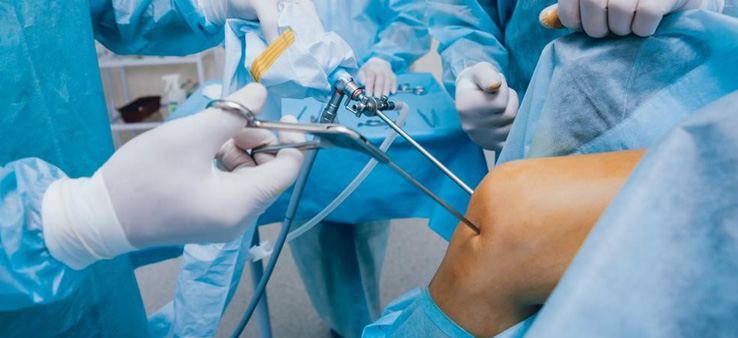


Are you suffering from joint pain or discomfort? Do you want to know what's causing it and get it treated as soon as possible? If yes, then arthroscopy might be the solution you're looking for. Arthroscopy is a sophisticated surgical procedure that's utilised for both diagnostic and therapeutic purposes. This revolutionary technique involves examining the internal structure of a joint with the help of an arthroscope - a pencil-sized instrument equipped with a small lens and lighting system.
Unlike traditional joint surgery, which requires large incisions, arthroscopy is a minimally invasive procedure that involves making small incisions about the size of a buttonhole. Through these incisions, the surgeon inserts the arthroscope and other specially designed instruments. The arthroscope functions by magnifying and illuminating the joint's structures using transmitted light through fibre optics, which is then projected onto a television monitor via a camera.
The advantages of arthroscopy are numerous. It can detect inflammation such as synovitis, injuries to the cartilage, tendons, and ligaments, and even osteoarthritis. Additionally, arthroscopy is useful in removing loose bodies of bone or cartilage that may become lodged within the joint. This procedure can be performed on many different joints, including the knee, shoulder, elbow, ankle, hip, and wrist.
Arthroscopic surgery can be performed under general, spinal, or local anaesthesia, depending on the patient's specific condition. Once the procedure is completed, the arthroscope is removed, and the incisions are closed. Patients are given post-operative instructions regarding incision care, exercise, and advised to avoid certain activities to promote faster recovery.
As with any surgical procedure, arthroscopy carries potential risks and complications. These may include infection, excessive swelling, bleeding, and damage to blood vessels or nerves. It's essential to follow your surgeon's post-operative instructions carefully and allow sufficient time for the puncture wounds to heal and for the joint to recover fully. While patients can resume normal activities within a few days, a rehabilitation program may be recommended to restore normal joint function.
In conclusion, arthroscopy is a revolutionary surgical procedure that has revolutionized the diagnosis and treatment of joint conditions. It's a minimally invasive procedure that allows for faster recovery times and fewer complications. If you're experiencing joint pain or discomfort, consult with your physician to see if arthroscopy is a suitable option for you.